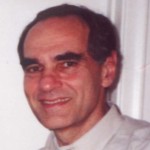Home › Forums › 2015 International Workshop on Quantum Foundations › Retrocausal theories › Experimental tests of the Special State theory
- This topic has 1 reply, 2 voices, and was last updated 8 years, 9 months ago by
 Ken Wharton.
Ken Wharton.
-
AuthorPosts
-
July 15, 2015 at 11:25 am #2763
 Lawrence S. SchulmanMember
Lawrence S. SchulmanMemberAn experimental test of the “special state” theory of quantum measurement is proposed. It should be feasible with present-day laboratory equipment and involves a slightly elaborated Stern–Gerlach setup. The “special state” theory is conservative with respect to quantum mechanics, but radical with respect to statistical mechanics, in particular regarding the arrow of time. In this article background material is given on both quantum measurement and statistical mechanics aspects. For example, it is shown that future boundary conditions would not contradict experience, indicating that the fundamental equal-a-priori-probability assumption at the foundations of statistical mechanics is far too strong (since future conditioning reduces the class of allowed states). The test is based on a feature of this theory that was found necessary in order to recover standard (Born) probabilities in quantum measurements. Specifically, certain systems should have “noise” whose amplitude follows the long-tailed Cauchy distribution. This distribution is marked by the occasional occurrence of extremely large signals as well as a non-self-averaging property. The proposed test is a variant of the Stern–Gerlach experiment in which protocols are devised, some of which will require the presence of this noise, some of which will not. The likely observational schemes would involve the distinction between detection and non-detection of that “noise”. The signal to be detected (or not) would be either single photons or electric fields (and related excitations) in the neighborhood of the ends of the magnets.
Entropy 2012, 14, 665-686; doi:10.3390/e14040665
July 19, 2015 at 1:32 am #2888 Ken WhartonMember
Ken WhartonMemberHi Larry,
Thanks for posting this; I don’t think your ideas are getting their deserved attention from the wider quantum foundations community, and as you know am trying to inform people about them in my own work.
In my piece here in this forum, I talk about your one-particle model and conclude that it is effectively retrocausal. (The future settings have a causal impact on whethere there were any kicks in the past.) Would you agree with this?
I’d also be very curious to hear what you think about the extension I’m proposing from the 1-particle to 2-particle sector, using the built-in retrocausality to avoid the need for going into configuration space.
I’m curious about your claim in Section 3.4 that a single non-grotesque final boundary condition in the distant future can prevent grotesque states here in the past. That would be very nice if true, but I’m worried you’re using position as a preferred-basis. Is it really true that your initial special states aren’t ever “grotesque” themselves, by the same metric?
Also, I wonder about this idea that the mechanism behind the kicks would come along with some “collateral damage”. I would think that the same logic that constrains the future boundary of these particles would also constrain the future boundary of the kick-mechanism to be *exactly* what was needed to knock everything into an eigenstate.
I’m of two minds about having a literal kick-mechanism, rather than just a deviation from strict deterministic equations. At one level, I can see the appeal of having an actual mechanism, hidden in the details of the initial conditions. But whenever I go down that road, I almost always end up in a hidden-variable framework, where the standard quantum description is not sufficient.
For example, if you put a photon through a 50-50 beamsplitter, followed by two detectors, you find the photon on just one detector. Thinking of the photon as an EM wave, you can accomplish this same outcome by putting a *hidden* EM wave input into the other input arm of the same beamsplitter. Then, classical interference can force all the EM wave onto a single arm. (Basically, you’d be violating the Sommerfeld condition, but there’s really no way to tell whether it happened or not, because the necessary EM wave amplitude is below the uncertainty principle limit.)
But this hidden-real-wave doesn’t seem to be what you have in mind; you’re trying to stick with unitary Schrodinger evolution on states that live in Hilbert space. I’m surprised, though: if you’re right about all this, then the fact that standard QM works at all is a bit of a shock. Most of the time we’re calculating with the wrong wavefunction (since we don’t know about the kicks), and imposing the wrong boundary conditions (since we don’t take the future into account). If you’re right about all this, why would you think that standard QM would emerge unscathed, or that we ever would have developed the right model in the first place?
Finally — has there been any progress towards actually doing any of these experiments?
Thanks again for the paper!
-
AuthorPosts
- You must be logged in to reply to this topic.

Comments are closed, but trackbacks and pingbacks are open.